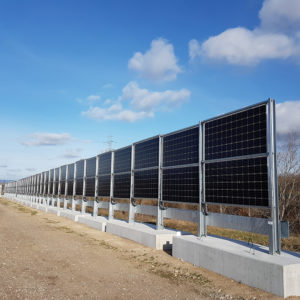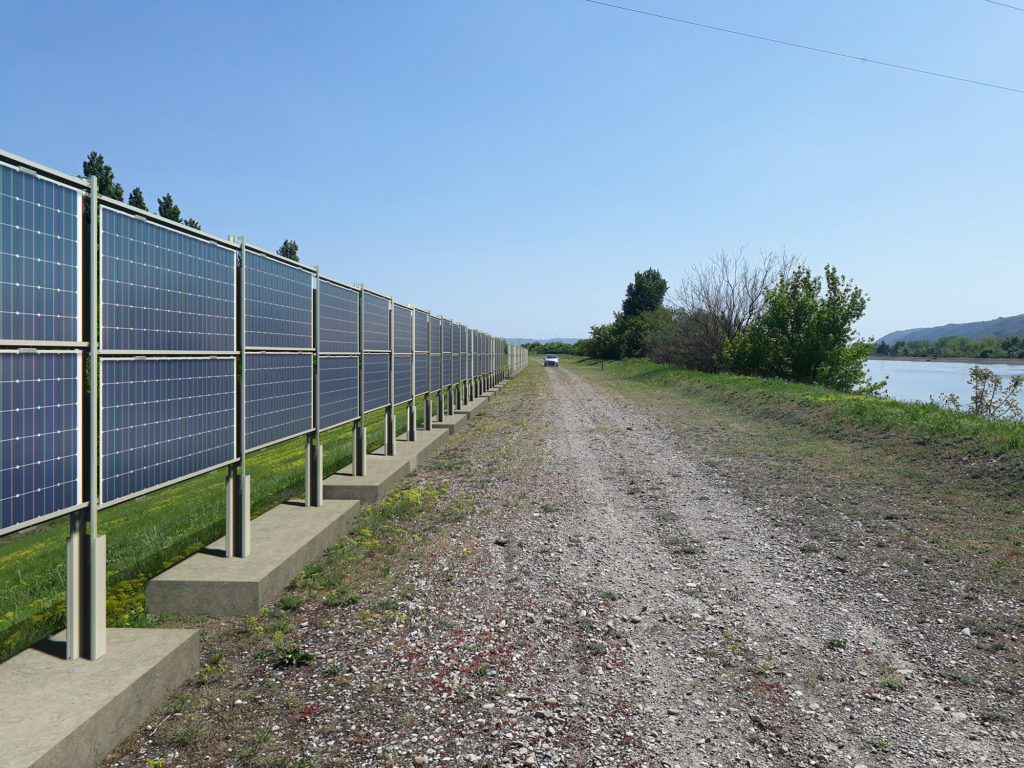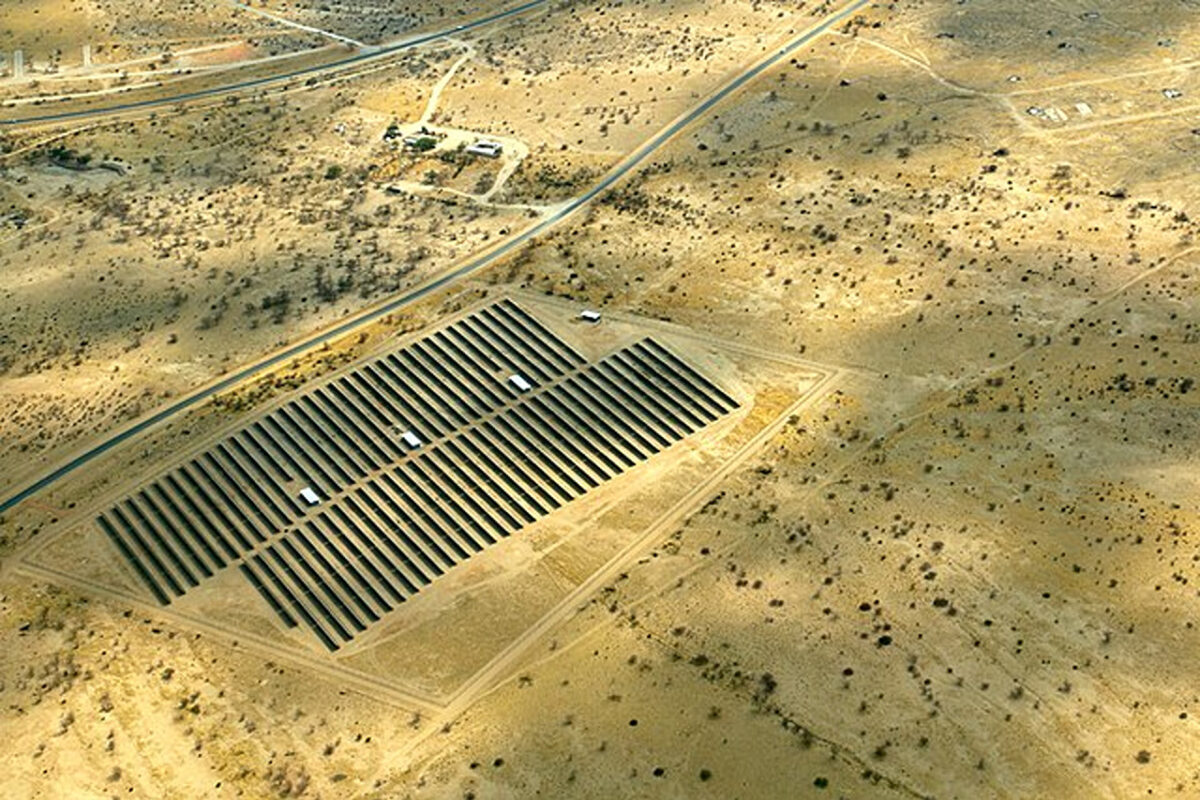From pv magazine France
French energy company Compagnie Nationale du Rhône (CNR), a unit of the Engie group, operates 400 km of dikes, which the company sees as an “opportunity to develop large scale vertical photovoltaics.”
This technology makes it possible to enhance the value of land that is already being utilized, while preserving its other uses. But it also involves many technical challenges, such as cable lengths and resistive losses.
As part of its “Photovoltaïque Grand Linéaire” innovation program, CNR is initially deploying three pilot projects with the aim of demonstrating the technical and economic viability of these parks which can be several tens of kilometers long.
Under development since 2017, the first pilot facility was commissioned this December on the Sablons dyke, in the Isère department. The 104 kW system was installed over 350m along a canal. It relies on bifacial PV panels placed on mounting systems with a height of 3 meters.

CNR is also working with the French Institute for Energy Transition INES.2S to optimize the architecture of thee vertical facilities. Their work made it possible, for example, to develop a software tool to determine the optimal cabling of such power plants and to make a precise inventory of the issues at stake.
From a societal point of view, the Sablons demonstrator is also accessible to users of the Rhône embankment. The park will not be fenced and the panels will be able to be approached closely, which will prefigure the more massive integration of solar photovoltaics on other types of uses such as electric vehicles, road railings, or building facades, among others.
The second demonstrator will consist of a 1.5 km long system installed on a section of the ViaRhôna dike, which runs along the Rhône river, with the panels being East-West oriented. Construction is expected to commence in 2023. In particular, it will allow the testing of innovative energy evacuation devices intended to reduce energy losses due to transport in electric cables.
The third, with a length of 10 to 20 km, should see the light of day in 2025. It will be the first full-scale demonstrator of a large linear photovoltaic park.
This content is protected by copyright and may not be reused. If you want to cooperate with us and would like to reuse some of our content, please contact: editors@pv-magazine.com.




I would like to see a technical discussion of this design, it looks very in-efficient.
Half of the panels are shaded until noon?
Hello Tom.
I think it may be a good idea with vertical and/or bifacial PV panels. Although less efficient, they provide power over a larger portion of the day. Considering the cost of storing energy in batteries or otherwise, it may be less costly and definitely less complex to employ twice or three times the surface area of PV modules, than having to rely on storage to achieve the same degree of duration.
In addition there may be cases where the space occupied by these vertical panels would otherwise not have come to any use, or where the function of fencing or shading etc. provides additional benefit from the PV panels.
Other cases can be mentioned as well. For instance, consider Sweden where I live. We need more electricity during winter because of the cold weather. At the same time there is fewer hours of daylight available the farther north you get, plus the fact that the sun is at a very low angle compared to summertime. In addition snow and ice builds up on roof mounted (non vertical) PV modules.
In such conditions vertically mounted panels make sense.
1. take advantage of low angle of the sun
2. make use of reflected light from the ground (snow is almost a perfect reflecting surface)
3. avoid PV panels being covered by snow
I would actually question the overall benefit of normal roof mounted PV in places like Sweden, say north of Stockholm or so.
I’m sure you note that I do not back up any of these statements with any calculations or figures. So I could be dead wrong.
I would hope that someone does the math to figure out.
Given that the panels are not fenced off I wonder how long it will take before vandals decide to spray graffiti on them.
Need techical data sheet of Module and Genration data
Good idea, we could fence Interstate-10 with a solar build like this and have a good start to energy independence.
A good Mathematical calculation to show the efficiency of this orientation would be helpful.
However, the benefits and application of this method cannot be over emphasized, particularly in fencing etc. Being bifacial has a good advantage though I doubt the overall efficiency of this installation as compared to rooftops and BIPV
We are looking for a Qoutation for 350Mw and
1GW mega solar power plant .